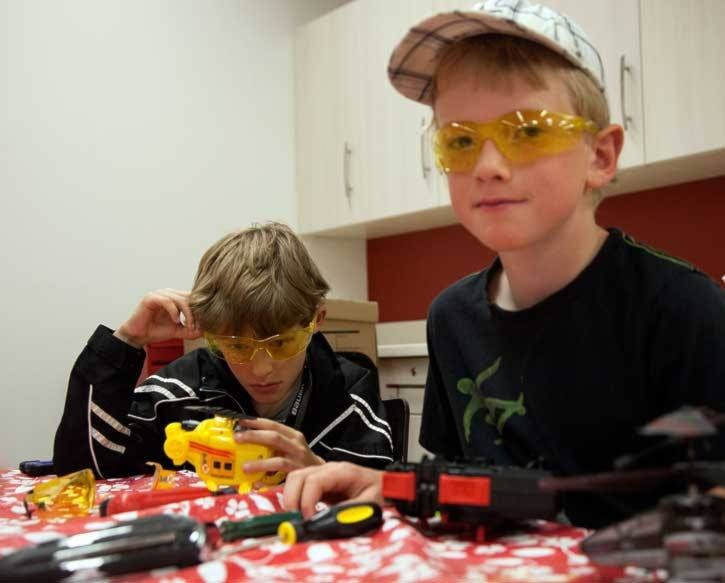The electronic toy hacking event was held at the Stettler Public Library, organized and supervised by programmer and Science teacher Elaine Hoekstra.
The aim was to pull apart some toys and figure out a way to reconfigure them differently. Hoekstra said, “The main thing is to take a look at what actually happens to make a battery-operated toy work. So that they can take their science knowledge about Physics and circuits and electricity at school and apply them at the library and into their own toys and see how that works.”
Stettler Elementary student Shawn Werbowesky was at the event to make his plane work again. He said, “I am here because I want to make my plane work that hasn't worked in a long time. I got this plane when I was four years old, and now I am nine. I will be really happy if it works again.”
Often in a connected world, students are not given a chance to apply what they learn in class, and this was one of Hoekstra’s ways to make them do so. Hoekstra explained, “We’ve been attempting to do a lot more of electronic investigation and exploration at the library and this is one of the events that other libraries have hosted, where we are going to open up some toys and take a look at them and either determine how the circuits are working and attempt to change sounds or lights and create something different.”
There were safety glasses, screwdrivers, and other tools to help participants and ensure they were in a safe working environment.
Another Stettler Elementary student Aedyn Skuce said, “I am here to see how electronic toys work.”
As a Science and Math teacher Hoekstra wanted to explore what they had done in their classrooms or are about to deal with. She said, “It depends on their age group, where they are in their schooling. It may not have been part of their curriculum in-depth yet so it is something to give them either a hands-on as here’s what’s coming up as you go into the next grade or here’s what you’ve done and this is another way to look at it. Its personal experiences versus their classroom learning and putting them together which is what education is, or what we want to do with learning at a library, to have all the sides put together.”
